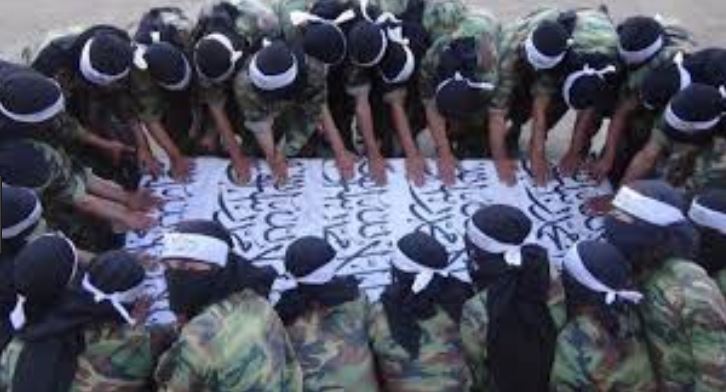
As America approaches the 18th anniversary of the Sept. 11, 2001, terrorist attacks, we also approach the 18th anniversary of the U.S. invasion of Afghanistan, like reported by townhall.com.
U.S. forces are still there. So are the Taliban and Al Qaida — and a growing branch of the Islamic State of Iraq and Syria.
From January through March 2019, according to the latest report from the lead inspector general for Operation Freedom’s Sentinel, four Americans were killed in combat in Afghanistan.
“On October 7, 2001, the United States launched combat operations under Operation Enduring Freedom to topple the Taliban regime and eliminate al Qaeda,” the inspector general explained in a brief historical summary of the war.
“The Taliban regime fell quickly and U.S. officials declared an end to major combat operations on May 1, 2003,” said the summary.
Then the democracy building started.
“Subsequently, the United States and international coalition partners continued to work with the Afghan government to build democratic institutions in the country,” the inspector general explained.
“However, as the new Afghan government developed, the Taliban regrouped and launched increasingly deadly attacks to recapture lost territory,” said the inspector general.
U.S. Forces-Afghanistan (USFOR-A) provided the inspector general with estimates of how many fighters the Taliban and various terrorist groups now have in Afghanistan. But these estimates, it said, were made with “low confidence.”
“USFOR-A told the DOD OIG that it estimated the Taliban has 20,000 to 30,000 fighters in Afghanistan,” the report said. “An additional 10,000-25,000 fighters periodically join the Taliban for attacks, though only a portion of them are fighting at any given time.”
“USFOR-A estimated, with low confidence, that there are as many as 5,000 ISIS-K (Islamic State of Iraq and Syria-Khorasan) fighters and 300 al Qaeda fighters in Afghanistan,” said the report.
The State Department’s latest report on human rights in Afghanistan describes some of what these “fighters” were doing in 2018.
“The Taliban and other insurgents continued to kill security force personnel and civilians using indiscriminate tactics such as improvised explosive devices (IEDs), suicide attacks, and rocket attacks, and to commit disappearances and torture,” said the State Department.
“The Taliban and ISIS-Khorasan Province (ISIS-K) used children as suicide bombers, soldiers, and weapons carriers,” it said.
“In some areas the Taliban enforced a parallel judicial system based on a strict interpretation of sharia,” it said. “Punishments included execution and mutilation.”
“On June 4, ISIS-K targeted a gathering of religious scholars in Kabul with a suicide bombing, killing 14 after the scholars issued a religious declaration condemning suicide attacks,” said the report.
“On January 20, the Taliban attacked the Inter-Continental Hotel in Kabul, killing 42, including 17 foreign nationals,” said the State Department.
Led by Ambassador Zalmay Khalilzad, the U.S. government is now negotiating a “peace deal” with the Taliban.
“On January 28, Ambassador Khalilzad announced that the United States and the Taliban had reached an ‘agreement in principle’ on four elements necessary for a peace settlement: counterterrorism assurances, troop withdrawal, intra-Afghan dialogue, and a comprehensive ceasefire,” said the inspector general’s report.
“In March, Ambassador Khalilzad stated that the two sides were ‘agreed in draft’ on the first two elements,” said the inspector general.
This apparently means the U.S. government is ready to trust the Taliban to prevent terrorists from finding sanctuary in Afghanistan after U.S. troops withdraw.
“On preventing terrorist safe haven in Afghanistan, Ambassador Khalilzad stated in a media interview that ‘(t)he Taliban have committed, to our satisfaction, to do what is necessary that (sic) would prevent Afghanistan from ever becoming a platform for international terrorist groups or individuals,'” said the inspector general’s report.
In the meantime, the U.S. has stopped targeting the Taliban’s drug business.
The inspector general’s report for October through December 2018 said, “In 2017, U.S. and Afghan forces launched an air and ground campaign, called Operation Iron Tempest, to target Taliban narcotics sites.”
“At that time,” it said, “USFOR-A estimated there were 400-500 drug labs in Afghanistan that produced $200 million per year in revenue for the Taliban.”
“During the quarter, however, the U.S. military ended this campaign,” the inspector general said.
“Narcotics production in Afghanistan remained at elevated levels,” it said.
Al Qaida, according to the latest inspector general report, is now “among the smaller terrorist groups in Afghanistan.”
“USFOR-A assessed that al Qaeda poses ‘a limited, indirect threat’ to U.S. and allied forces through the support it provides for the Taliban and Haqqani Network attacks,” said the report. “Specifically, al Qaeda runs training camps, helps plan and fund attacks, and creates and disseminates propaganda highlighting attacks by other groups.”
“Al Qaeda remains dependent on the Taliban for safe haven, facilitation routes, and supply networks, according to USFOR-A’s assessment,” it says.
It is worth remembering that when the United States delivered justice to Osama bin Laden, he was in Pakistan, not Afghanistan. The troops that took him out were not part of an invasion. They were part of a carefully planned surgical strike.
They were not building a nation. They were killing a terrorist.
The ultimate question for the United States in Afghanistan is not “What we can do over there?” but “What is the most effective and prudent way to stop terrorists from coming here?”


